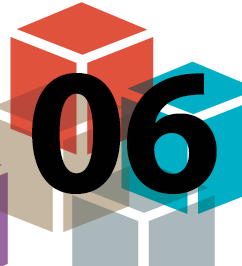
Sales Trend 6 from the Barrett 12 Sales Trends Report for 2021 explains how and why remote selling is here to stay.
 COVID has completely reshaped how we do B2B sales with an almost exponential rise in the number of digital / remote client meetings being undertaken on video conferencing platforms such as Zoom, Teams, Skype, or Google. Video conferencing and chat has replaced face-to-face encounters overnight. By now, most of us would have experienced video conferences through a number of those platforms, helping us stay in contact to buyers and sellers. What started out as a crisis response is now becoming mainstream and will not be a short-term phenomenon.
COVID has completely reshaped how we do B2B sales with an almost exponential rise in the number of digital / remote client meetings being undertaken on video conferencing platforms such as Zoom, Teams, Skype, or Google. Video conferencing and chat has replaced face-to-face encounters overnight. By now, most of us would have experienced video conferences through a number of those platforms, helping us stay in contact to buyers and sellers. What started out as a crisis response is now becoming mainstream and will not be a short-term phenomenon.
Early on in the pandemic, savvy business and sales leaders were already seeing the business case for doing B2B selling remotely via video conferencing, chat and phone – it is economically very viable, as remote Selling activities directly impact COSA (Cost Of Sales Activities).
At Barrett we ran the first official remote selling training program in June 2020, with an industrial client who was quick off the mark seeing the benefits and competitive advantages of training and upskilling their technical sales teams across APAC. The cost and time saved, as well as the boost to salesperson activity and productivity with more time to prospect and meet clients remotely are incredible. Not having to travel to meetings and instead being able to make more contacts and have meetings with supplier and client teams from different locations remotely makes digital or remote selling highly attractive and competitively advantageous.
It’s not just suppliers taking advantage of this, many buyers are saying they prefer this digital sales space, too. As McKinsey reported in their latest B2B sales research paper (Oct 2020), only 20% of B2B buyers say they want to return to face-to-face selling. [1]
We reported back in June 2020 that it looked likely remote selling will become standard operating procedure in the future and that it will be important to upskill B2B field sales team to know how to sell remotely.
Will B2B sales teams go 100% digital?
Unlikely. But the pendulum is very likely to stay in favour of digital or remote selling with a smaller mix of essential or specific in-person client meetings being the exception rather than the norm moving forward. Of course, the ratio of this mix of remote and physical contacts an organisation will have with their customers will depend on a number of factors, like the actual geographical proximity of buyer and vendor, how progressive or conservative an industry, or more specifically, the leaders in charge of such decisions are. Organisations, no matter how much they‘d like to embrace the new technology will also need to be sensitive to the expectations of their customers.
While safety will also play a big factor in the rise of digital or remote selling in COVID normal world, it’s the economic factors that are holding sway. The digital selling genie is well and truly out of the bottle and unlikely to go back in.
So, in rebuilding our sales efforts what do we need to stop, start, and continue to do in 2021?
Stop
- Resist the temptation to try and turn back the clock. Viewing these changes in 2020 as a mere interim necessity, caused by the international crisis and hoping for things to return to some previous “normal” once we can leave the pandemic restrictions behind.
- Clinging to sales methods that are in decline and ignoring the accelerated evolution of sales and selling in the near future.
- Postponing inevitable upgrades and changes to technology and the way your organisation manages those. Avoid viewing the changes in technology as a disruption caused by a unique situation and look at them as an acceleration of a development that was well under way already.
Start
- Investing in user friendly, self-serve, secure e-commerce sites that make it easy to re-order and make large purchases (>$50,000) online.
- Training your B2B field sales teams and other client facing people in remote sales skills, knowledge, and capabilities.
- Investing in video conferencing facilities and tech for your sales and client facing teams because video conference is now accounting for 43% of B2B revenue more than other sales channels.
- Consciously work on establishing the necessary strategies, processes, and resources your sales teams need to keep engaging successfully through a diverse array of communication channels.
- Assessing your existing market and exploring potential new ones these changes open up for you and your organisation.
- Exploring the best ways to establish and maintain customer relationships when the frequency of face-to-face meetings should remain low. Studies show that even good salespeople struggle to use their sales skills through these new channels as effectively as in whichever their traditional way was.
Continue
- Keep an open mind and be willing to adapt and adopt.
- Keep the digital communication channels to your customers and other stakeholders open.
- Continue diversifying the ways and means to communicate internally and externally. The new channels will not replace the old ways completely, which means we also need to embrace a broader range of approaches to customers and stakeholders. This will not necessarily make things easier right away, but there will be new opportunities to reward your efforts to proactively drive this change forward with your sales team.
Remember, everybody lives by selling something.
[1] https://www.mckinsey.com/business-functions/marketing-and-sales/our-insights/these-eight-charts-show-how-covid-19-has-changed-b2b-sales-forever
Related topics
12 Sales Trends for 2021 – The rebuild
How to stay open for business: Selling Better during this crisis and beyond.
Where have businesses been exposed during the crisis when it comes to Sales?
A year ago
25 years of helping people and businesses sell better for a sustainable future


New Article Email Notification